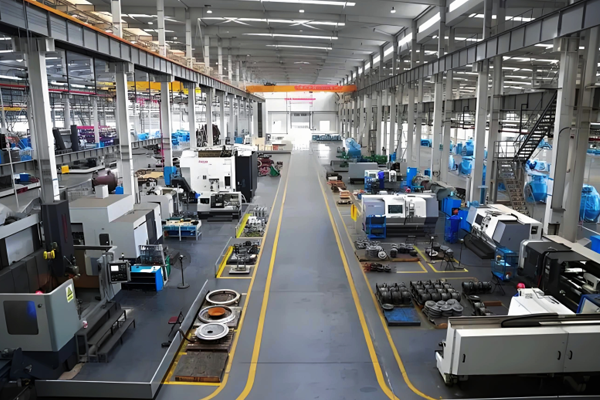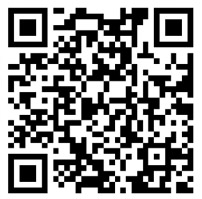
Equal Diameter Cross
Equal Diameter Cross is a pipe fitting in the shape of a "cross", with four ports of identical diameter. It is mainly used in pipeline systems to achieve four-way diversion or merging of media (such as dividing one medium into three or combining three media into one). It is indispensable in complex pipeline layouts and can efficiently solve the needs of multi-directional medium transportation. Here is a detailed analysis:
1、 Core Structure and Function
The structure of equal diameter four-way is symmetrically distributed in a "cross" shape, and the nominal diameter (DN) of the four ports (usually labeled as the main pipe ends and two branch pipes) is consistent (such as DN80 × DN80 × DN80 × DN80). Its core functions are:
Diversion: evenly distribute the medium from the main pipeline to the other three branch pipelines (such as in a central air conditioning system, where the main refrigerant pipe is diverted to the end devices of multiple rooms through equal diameter four-way connections);
Confluence: Collect the media from three branch pipelines into the main pipeline (such as in a factory wastewater treatment system, where the drainage pipes from different workshops are connected to the main sewage pipe through equal diameter four-way connections).
Compared with tees (T-shaped), the advantage of equal diameter tees lies in their ability to connect in multiple directions, which can reduce the complexity of pipe combinations (such as avoiding the use of multiple tees spliced into a cross structure and reducing the risk of leakage).
2、 Materials and Applicable Scenarios
The material of equal diameter four-way should be selected according to the characteristics of the medium (corrosiveness, temperature, pressure) and environmental requirements. Common types include:
1. Carbon steel equal diameter four-way
Material: Q235, 20 #, A105, etc., low cost, high strength (can withstand high pressure), but poor corrosion resistance.
Applicable scenarios: Low pressure to medium high pressure systems that transport non corrosive media such as water, steam, and oil (such as municipal heating pipelines and inlet and outlet branch pipelines of oil storage tanks).
2. Stainless steel equal diameter four-way
Material: 304/304L (acid and alkali resistant), 316/316L (chloride ion resistant, such as seawater and saltwater), 321 (high temperature resistant, such as boiler flue gas).
Applicable scenarios: Strong corrosion, high hygiene requirements, or high-temperature environments (such as chemical acid and alkali transportation pipelines, clean water pipelines in food factories, and material distribution systems in pharmaceutical production).
3. Alloy steel equal diameter four-way
Material: Chromium molybdenum steel (such as A335 P11, P22), low-temperature steel (such as A333 Gr.6), excellent high and low temperature resistance.
Applicable scenarios: Extreme working conditions such as high-temperature and high-pressure steam pipelines (such as thermal power plants), low-temperature LNG transmission pipelines, etc.
3、 Differences in molding process and performance
The forming process of equal diameter four-way directly affects its strength and applicable pressure level, mainly divided into:
1. Seamless equal diameter four-way
Craftsmanship: Made from seamless steel pipes, it is formed through hot pressing, cold extrusion, or forging without welding seams, resulting in a uniform overall structure.
Performance: Strong impact resistance, high pressure resistance level (adaptable to Class 150 to Class 2500, corresponding to pressures of 1.6MPa to 42MPa), suitable for high-pressure and high-purity scenarios (such as natural gas long-distance pipelines and semiconductor high-purity gas pipelines).
2. Welding equal diameter four-way joints
Process: Made by cutting steel plates and welding them together, it can be customized with large diameters (such as DN1000 or above), and the cost is lower than seamless products.
Performance: Low pressure resistance level (usually applicable to Class 150 to Class 300), suitable for medium and low pressure, high flow systems (such as main pipeline branches of large sewage treatment plants).
4、 Key technical parameters and standards
1. Pressure level
It needs to be matched with the pressure rating of the pipeline system, and common standards include:
American standard: Class 150, 300, 600, 900, etc. (corresponding to pressures ranging from 2.0MPa to 15.0MPa);
National standards: PN10, PN16, PN25, PN40, etc. (corresponding to pressures ranging from 1.0MPa to 4.0MPa).
Seamless technology can meet higher pressures (such as Class 1500), and welding technology is mostly used in low-pressure scenarios.
2. Implement standards
The dimensions, tolerances, and performance of equal diameter four-way fittings must comply with international or domestic standards to ensure compatibility with the pipeline system
Domestic standards: GB/T 12459 "Steel butt welded seamless fittings", GB/T 13401 "Steel plate butt welded fittings";
International standards: ASME B16.9 (American standard, covering seamless and welded fittings), EN 10253-3 (European standard), JIS B2311 (Japanese standard).
5、 Installation and selection precautions
Pressure and flow balance: The four ports of the equal diameter four-way valve have the same diameter, and it is necessary to ensure that the pressure loss of the medium is uniform when splitting/merging (to avoid system imbalance caused by excessive flow in one branch, and to adjust it through valves if necessary).
Welding requirements: When connecting with pipelines, the same material welding rod (such as stainless steel four-way with stainless steel welding rod) should be used. After welding, non-destructive testing (such as X-ray inspection) should be carried out, especially for high-pressure systems, to ensure that the weld seam is defect free.
Medium compatibility: Stainless steel or alloy materials are preferred for corrosive media to avoid material erosion and leakage (such as when transporting sulfuric acid, carbon steel tees cannot be used).
Space layout: Before installation, it is necessary to confirm the direction of the pipeline and ensure that the four ports of the four-way valve are aligned with the connecting pipeline (excessive deviation can cause stress concentration and reduce service life).

+86-15533769121

Jango

jango@yuntaopiping.com

Beixiaozhuangzi Industrial Zone, Mengcun Hui Autonomous County
Copyright © 2025-2026 http://www.yuntaopiping.com. All Rights Reserved Yuntao Piping Group.,Ltd.Copyright



